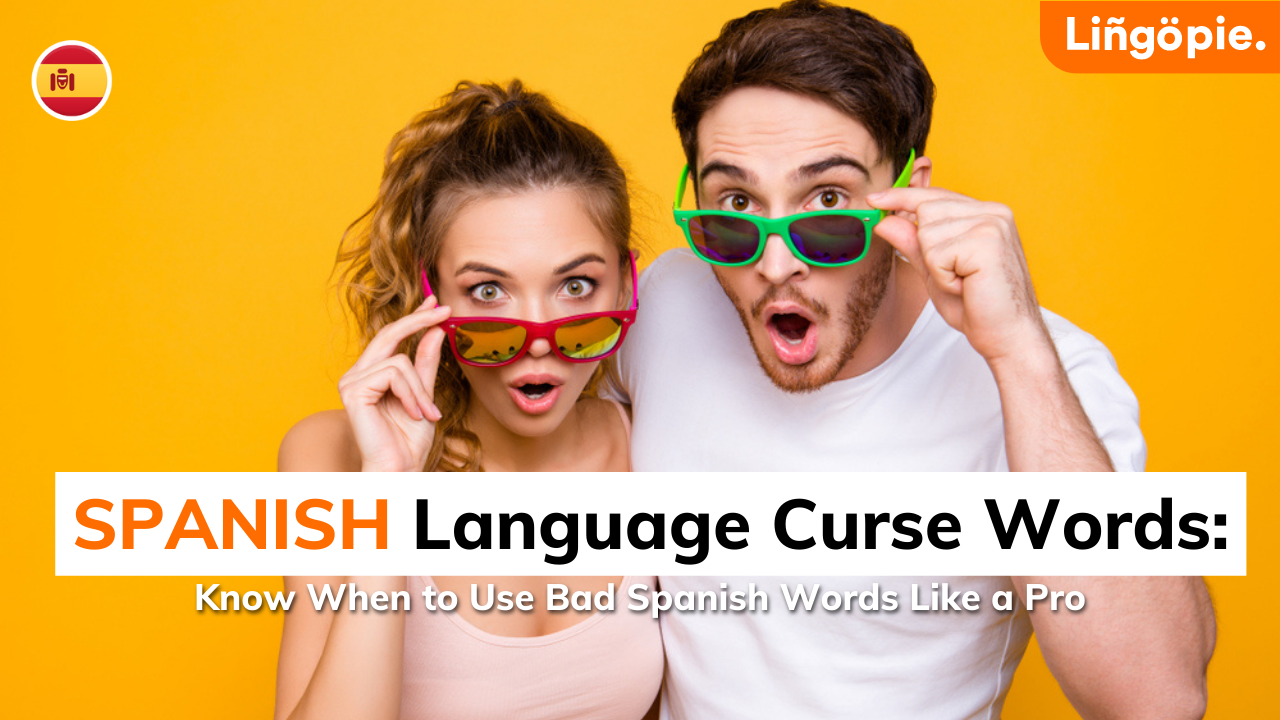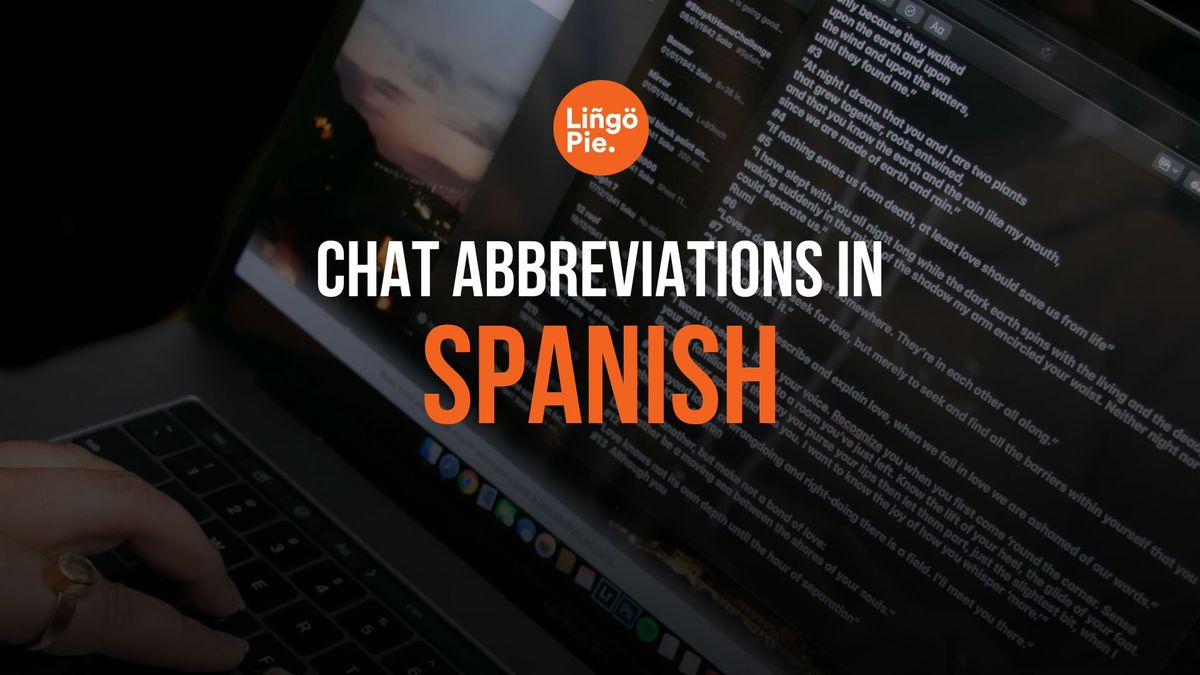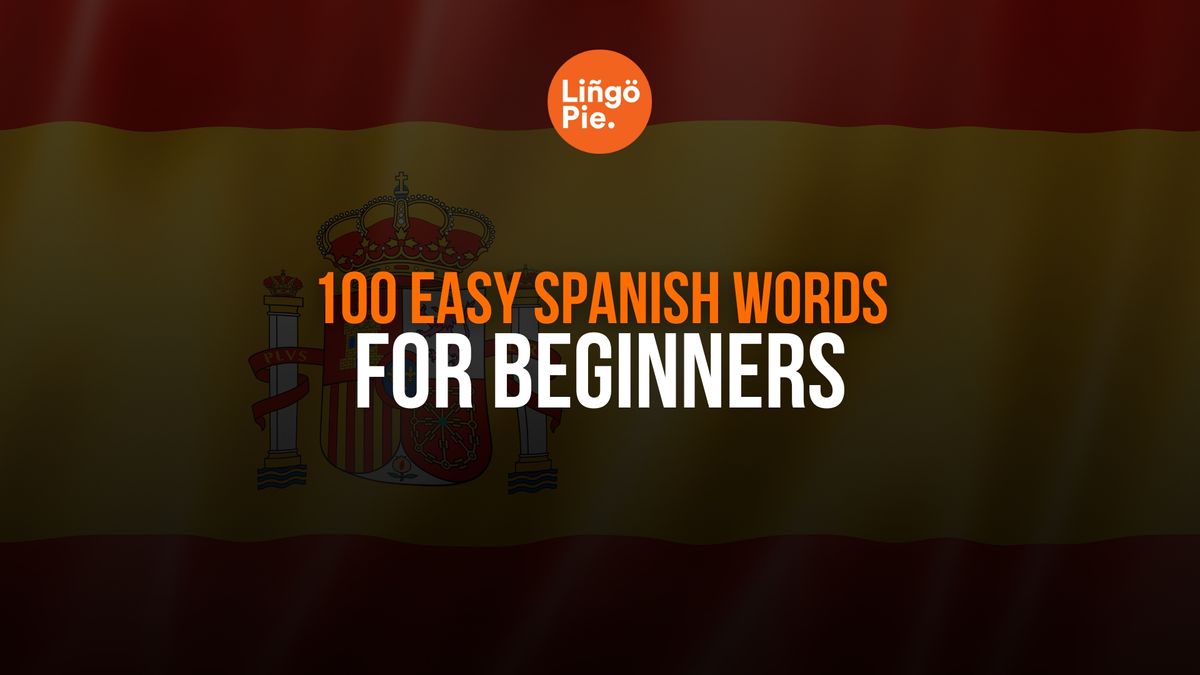Typing in Spanish often looks different from what you’ll find in a textbook. In casual messages, people use abbreviations, numbers, and shortcuts that match how they actually speak. These forms are fast, informal, and common across platforms like WhatsApp, Instagram, and TikTok.
Even greetings get trimmed down. Instead of writing hola, someone might type ola or drop a quick k onda to say hey in Spanish. If you're learning the language or chatting with native speakers online, it helps to recognize these patterns. This guide will walk you through the most common chat abbreviations so you can read and write messages more easily.
- 100 Easy Spanish Words For Beginners
- 5 Spanish Language Tests To Show Your Proficiency Level
- 14 Spanish Filler Words To Sound Like A Native [Guide]

Why Learn Spanish Chat Abbreviations
Chat abbreviations are common in everyday Spanish, especially in texts, social media, and casual conversations. They reflect how people speak and help messages move faster. For learners, knowing these shortcuts makes reading and writing feel more natural.
That said, Spanish is spoken across many countries, and each region has its own habits. An abbreviation used in Mexico might look different from one in Spain or Argentina. Some words get shortened differently, and others might carry a tone or meaning that's unique to a specific country. Recognizing these differences also helps you follow real conversations and avoid confusion when chatting with native speakers from different places.
Popular Spanish Chat Abbreviations
Jajaja

Laughter is universal, but its expression can differ with language. In English, "LOL" (Laugh Out Loud) signifies a hearty laugh. In Spanish-speaking regions, this morphs into "jajaja." Interestingly, the more "j"s you add, the more robust the laughter becomes, like "jajajaja" for a truly good laugh. It's not merely a casual abbreviation but a rich and hearty expression that signifies warmth and good humor in conversations.
OMG/Dios mío
Expressing surprise or astonishment can be succinctly captured with "OMG" (Oh My God) in English. In Spanish chats, this becomes "OMG" or "Dios mío" (my God). It's an exclamation that communicates disbelief or amazement, resonating well with the emotions of the speaker.
Vuelvo enseguida/Ya vuelvo
Need to step away from the conversation for a brief moment? While "BRB" (Be Right Back) is the English shorthand, in Spanish, you can say "Vuelvo enseguida" (I'll return shortly) or "Ya vuelvo" (I'll be back soon). The latter is a more casual way to tell your friends that you'll be right back without breaking the conversational flow.
TQM (Te Quiero Mucho)
Love and affection find beautiful expression in Spanish through "TQM," standing for "Te Quiero Mucho." It means "I love you very much," a sincere and warm way to convey deep fondness and care. It's an abbreviation that strengthens bonds and adds a loving touch to the conversation.
Somos bfos/bfas

Friendships are often sealed with "BFF" (Best Friends Forever) in English. Spanish speakers may use the same acronym, but with a local twist: "Somos bfos/bfas," akin to saying "besties." It’s a unique way of connecting, making the friendship vow resonate more culturally.
TVL (Te veo Luego)
When you need to sign off temporarily, "tvl" stands for "Te veo Luego" (See you later), capturing the informal essence of saying goodbye. It's a promise of return, ensuring that the conversation will continue later on.
In addition to these English-inspired abbreviations, Spanish speakers have crafted unique slang expressions:
- ALV (A La Verga) - A versatile phrase, conveying astonishment or frustration, like "wow" or "damn it!" It’s a casual way to react to unexpected events or surprises.
- salu2 (saludos) - For sending greetings or saying "hi," "salu2" (saludos) adds a personal touch, connecting people across distances.
- tmb (tambien) - It's a shorthand for "also," used to agree or add to a statement, enhancing the conversational flow.
- HDSPM (hijo de su puta madre) - Though very vulgar, this phrase is used to display strong anger or frustration. It's akin to saying "son of a b****" in English and should be used cautiously, considering its offensive nature.

Using "Q" As A Texting Abbreviation In Spanish
This little letter packs a punch in the world of Spanish texting shortcuts. Let's break it down:
- Q = Qué (What) Example: Q haces? (What are you doing?)
- Qienes = Quiénes (Who) Example: Qienes van a la fiesta? (Who's going to the party?)
- Qiero = Quiero (I want) Example: Qiero verte pronto. (I want to see you soon.)
Using Initials When Texting In Spanish
Just like in English, Spanish speakers love to use initials to speed up their texting. It's like a secret code that once you crack, you'll be texting like a pro in no time. These abbreviations are super common in casual chats, social media, and even some informal emails.
Here's a handy list of some of the most popular initial-based abbreviations you'll come across:
| Abbreviation | Full Phrase | English Translation |
|---|---|---|
| dtb | Dios te bendiga | God bless you |
| gpi | Gracias por invitar | Thanks for the invite |
| ntc | No te creo | I don't buy it |
| ntp | No te preocupes | Don't worry |
| pti | Para tu información | For your information |
| tmc | Te me cuidas | Take care of yourself |
| tqm | Te quiero mucho | I love you a lot |
| tkm | Te kiero mucho | I love you a lot |
Remember, "tkm" is just a cooler way of writing "tqm" - swapping the 'qu' for 'k' is a common trick in Spanish texting slang.
These abbreviations are just the tip of the iceberg, but they'll definitely help you navigate Spanish text conversations more smoothly. Don't be afraid to use them - native speakers will be impressed with your texting game!

Spanish Texting Facts
Ever feel like your texts are too formal? Well, Spanish speakers have a trick up their sleeve - they sometimes chop off the first few letters of a word to give their messages a more laid-back vibe. It might look weird at first, but trust me, you'll get the hang of it faster than you can say "ola"!
Here are some common examples you might run into:
| Shortened | Full Word | English Translation |
|---|---|---|
| Cuchame | Escúchame | Listen to me |
| Onde | Dónde | Where |
| Ola | Hola | Hi/Hello |
| Perame | Espérame | Wait for me |
Why do this? It's all about keeping things casual and speedy. Plus, it adds a touch of playfulness to your chats. Imagine you're meeting up with friends:
Instead of: "Hola, ¿dónde estás? Espérame un momento."
You might see: "Ola, ¿onde tas? Perame un momento."
Think texting in Spanish couldn't get any quicker? Think again! Spanish speakers have mastered the art of trimming down words by cutting out letters right from the middle.
Pos = Pues (Then / So) This little word gets a makeover by swapping "ue" for "o". Why? Because that's how it sounds in everyday speech! Examples:
- Pos vamos. (So, let's go.)
- Pos sí, es cierto. (Then yes, it's true.)
Pa quién = ¿Para quién? (For whom? / Who is it for?) Same trick, different question word. Example:
- Pa quién es el regalo? (Who's the gift for?)
Pro tip: These shortened forms are super casual. They're perfect for texting friends or posting on social media, but you might want to stick to full words when messaging your boss or writing that Spanish essay!
Must-Know Emojis in Spanish Chats
Spanish speakers, particularly in Latin America and Spain, use emojis to add emotion, tone, and cultural flair to messages. Some are universal, while others carry local meaning.
😂 Face with Tears of Joy
This remains the most popular emoji across platforms globally, including among Spanish speakers, used for laughter, amusement, or mock hilarity.
😅 Grinning Face with Sweat
On Reddit users from Latin America describe this as conveying “a self-deprecating laugh,” often after awkward or slightly embarrassing moments.
❤️ Red Heart & 💙 Colorful Hearts
Heart emojis are used frequently in Latin American chats to express affection, thanks, support, or warmth. It's common to see multiple hearts in different colors, echoing national or regional identities.
🔥 Fire
Popular in both English and Spanish contexts, this emoji signals enthusiasm, something “awesome,” or simply "lit” and ranks high in global usage.
👏 Clapping Hands
Also common in Spain and Latin America, often used to applaud, celebrate achievements, or show approval, whether you're congratulating a friend or highlighting an idea.
💀 Skull
Among younger users (especially Gen Z), this emoji is used to express extreme laughter ("I'm dead"), embarrassment, or shock—similar to "I'm dying" in English.
🤌 Pinched Fingers (“Qué pasa?” gesture)
This gesture, familiar in parts of Latin America like Argentina, conveys "what's up," "what do you want," or playful exasperation
Shortening Spanish Words For Texting And Chatting
In modern Spanish communication, particularly in digital contexts, the trend of shortening words has gained significant popularity. This linguistic phenomenon serves multiple purposes:
- Efficiency: Reduces typing time and effort in digital communication.
- Informality: Establishes a casual tone in conversations.
- In-group signaling: Demonstrates familiarity with current language trends.
Common Examples:
- Amix = Amigo/amiga (Friend) Usage: As a friendly address, similar to "dude" or "pal" in English. Example: Amix, ¿qué planes tienes? (Friend, what are your plans?)
- Grax = Gracias (Thanks) Usage: A casual way to express gratitude. Example: Grax por tu ayuda con la tarea. (Thanks for your help with the homework.)
- Vamo = Vamos (Let's go) Usage: An informal way to suggest an action or agreement. Example: Vamo al cine esta noche. (Let's go to the movies tonight.)
Usage Considerations:
- Primarily used in informal, digital communication (texting, social media, instant messaging).
- Increasingly common in casual spoken language, especially among younger generations.
- Generally avoided in formal writing, professional communication, or academic contexts.
Where To Learn Spanish Chat Abbreviations?
If you’re looking to learn Spanish the way it’s actually used (emojis, abbreviations, slang, and all) Lingopie is a great place to start. With real Spanish TV shows and movies from across the Spanish-speaking world, you’ll hear how people speak in everyday life and get used to the rhythm, tone, and expressions that don’t always show up in textbooks.
You can pause, read subtitles, and pick up native phrases in context. Whether you're learning how to say hey in Spanish or decoding fast-paced text messages, Lingopie helps you learn by listening, watching, and enjoying. Give it a try and see how much your Spanish improves.
FAQ
What are Spanish chat abbreviations?
Spanish chat abbreviations are shortened forms of words or phrases commonly used in texting, social media, and informal digital communication among Spanish speakers. They help make typing faster and conversations more casual, reflecting the dynamic nature of language in the digital age.
Are these abbreviations used in all Spanish-speaking countries?
While many abbreviations are widely used across the Spanish-speaking world, some may vary by region. For example, "tk" (te quiero) is common in Spain, while "tq" might be more prevalent in Latin America. This regional variation adds to the richness and diversity of Spanish online communication.
Can I use these abbreviations in formal writing?
No, these abbreviations are strictly for informal communication. It's important to avoid using them in academic papers, job applications, or formal emails. Knowing when and where to use these abbreviations is just as important as knowing what they mean.
Will using these abbreviations help me sound more like a native speaker?
When used appropriately in casual settings, yes. These abbreviations can make your Spanish sound more natural and contemporary. However, overusing them or using them in the wrong context might have the opposite effect. The key is to use them naturally and in moderation.
How can I learn more Spanish chat abbreviations?
Platforms like Lingopie, which use real-world content such as TV shows and movies, are excellent for learning current abbreviations in context. You can also engage with native speakers online, follow Spanish-language social media accounts, or participate in Spanish-language online forums and chat rooms.








![How to Learn Spanish as An Adult [Guide]](/blog/content/images/size/w300/2025/12/How-to-Learn-Spanish-as-An-Adult.jpg)
![How To Do The Mexican Accent [Complete Guide]](/blog/content/images/size/w300/2024/06/Understanding-Mexican-Spanish-Accents.jpg)
